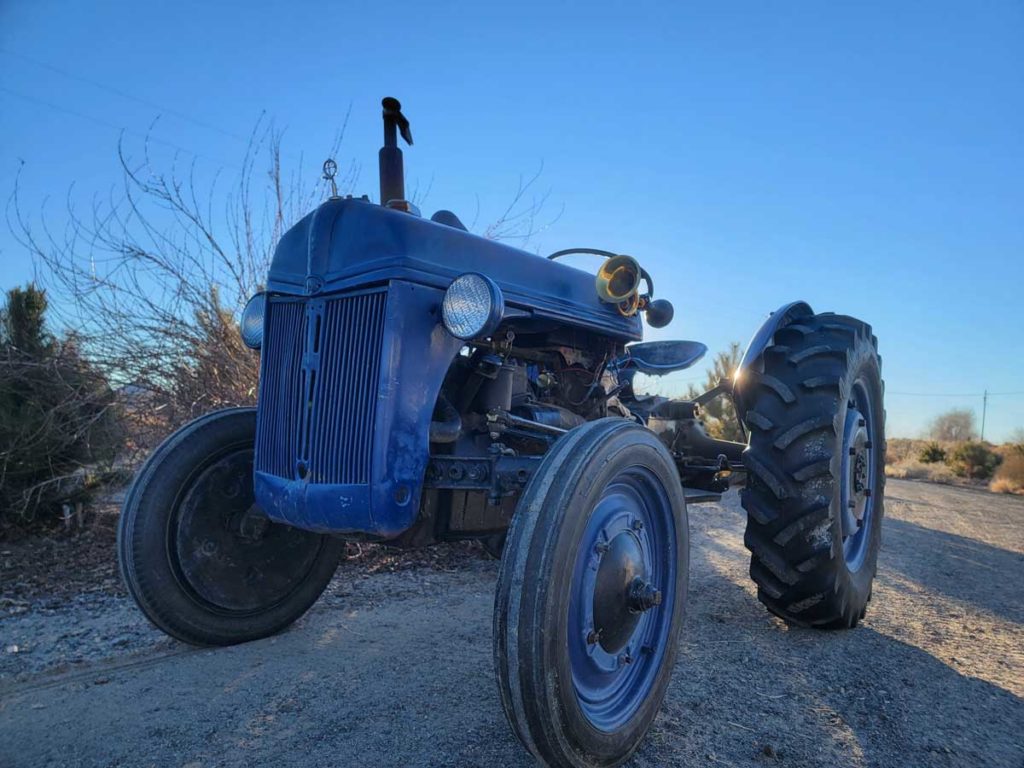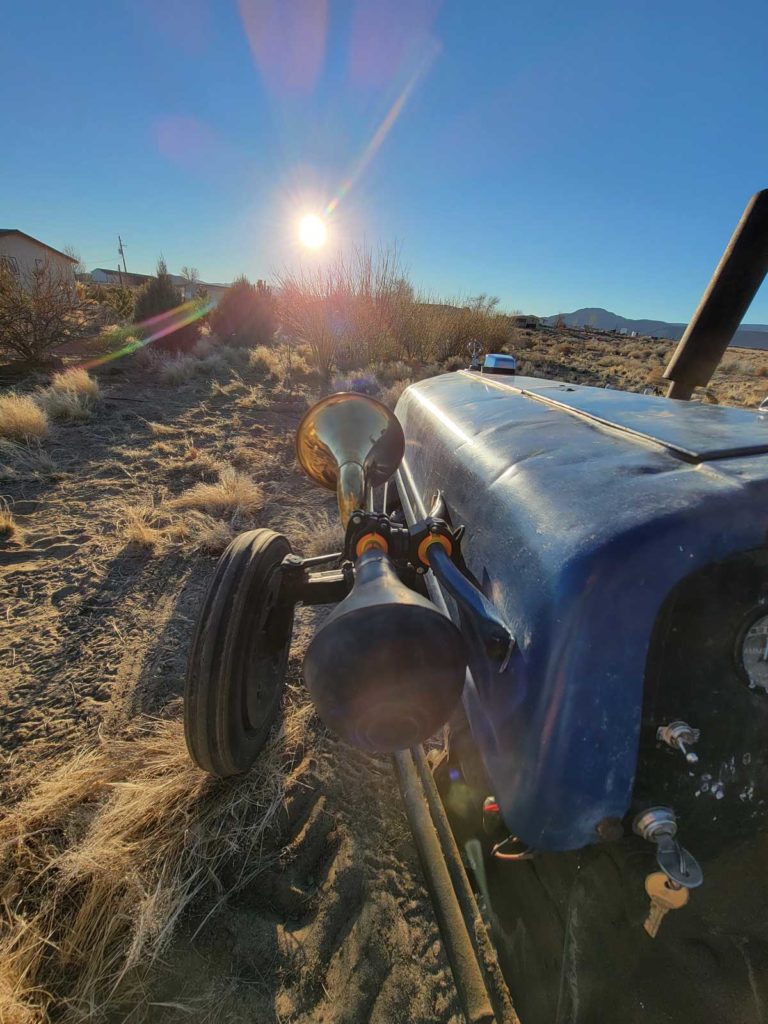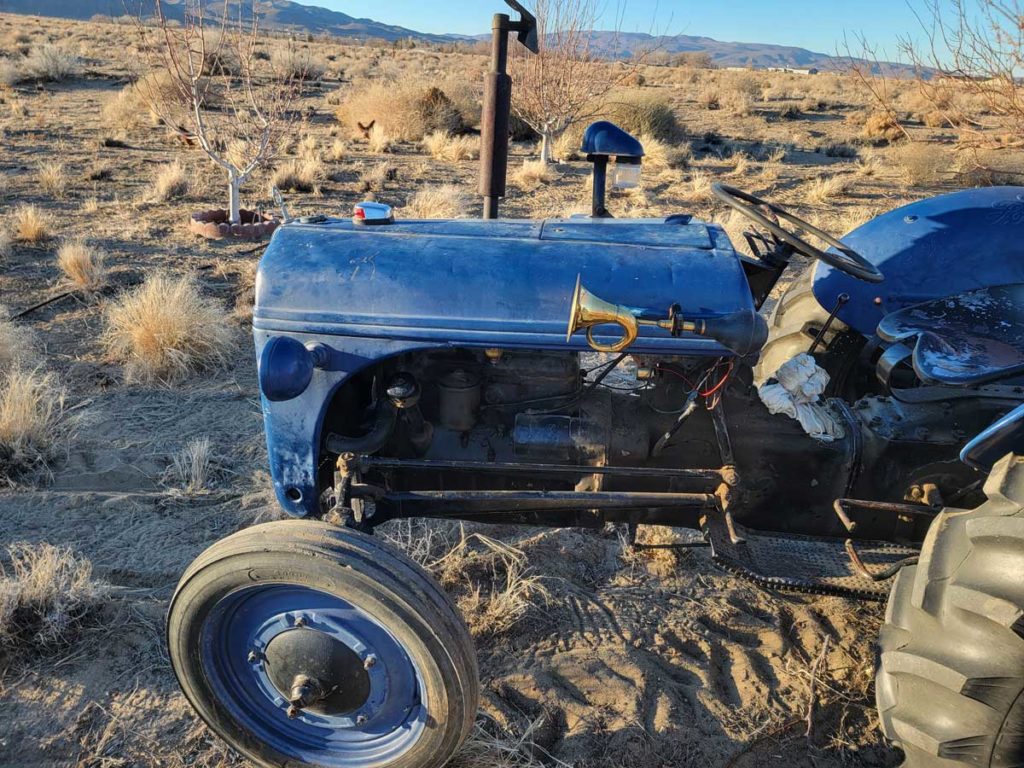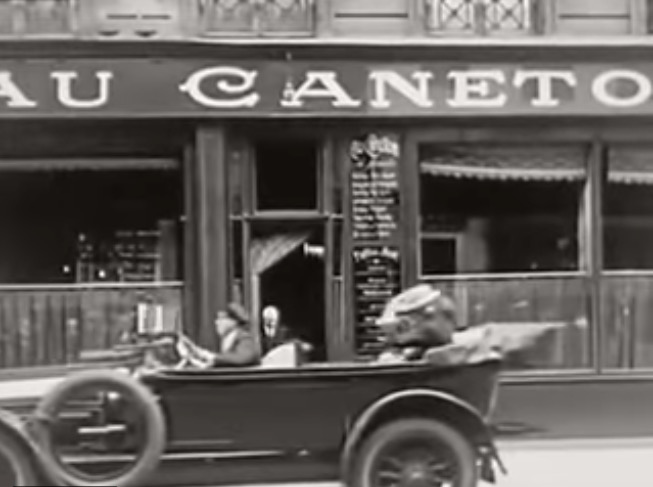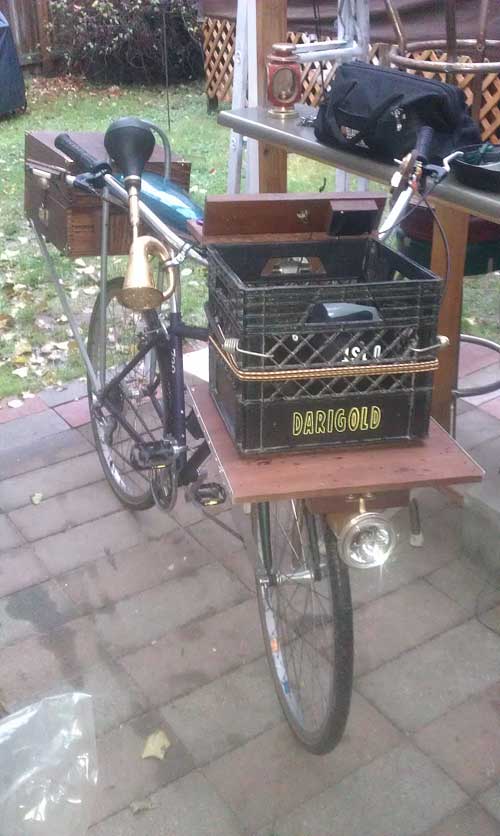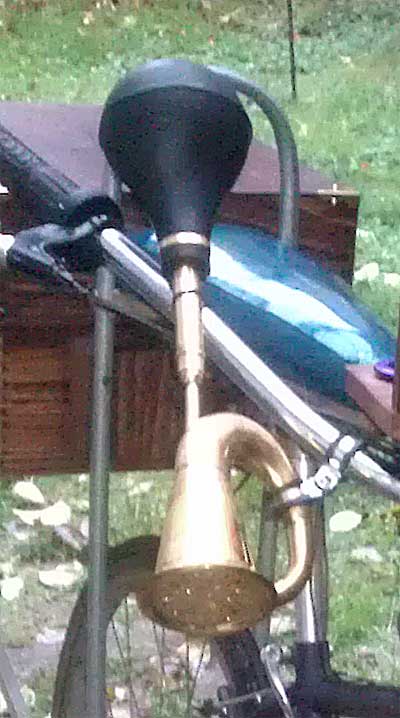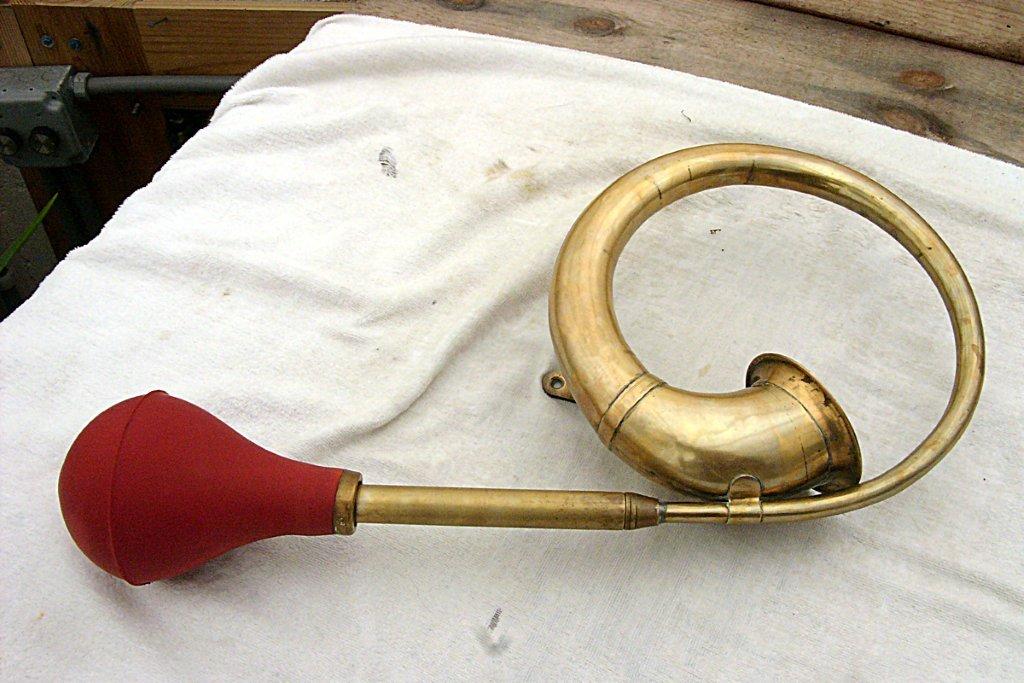Wolf sent along some pics of his awesome tractor in the Nevada desert. Truly a thing of beauty.
Thanks Wolf! Happy Honking!
Tag: bulb horn
Harpo Speaks!
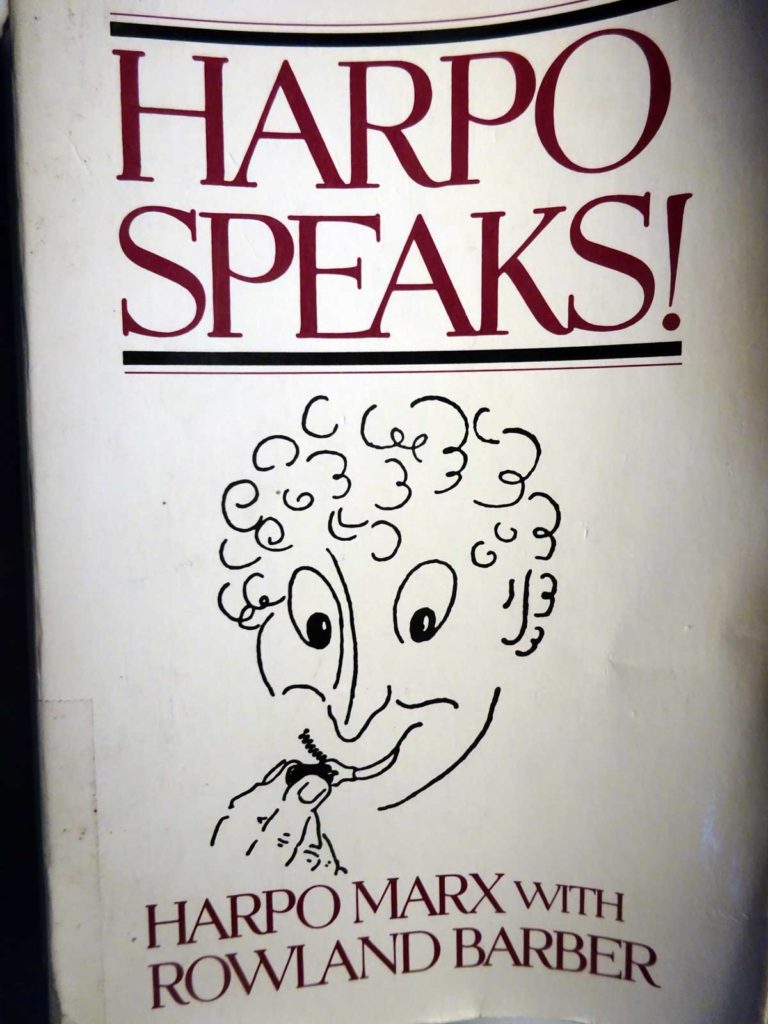
Finally found a used copy of Harpo’s autobiography. A fun romp through early, poverty-stricken but full of get up and go New York Marx family childhood stories (Harpo was born in 1888!). Followed by years and years of pounding the pavement scratching out a living on the Vaudeville circuit. Finally a few breaks and steady theater success, and then Hollywood and the big time.
Here he details the birth of his trademark squeeze horn ( taxi horn). The show ‘Home Again’ puts this at around 1914.
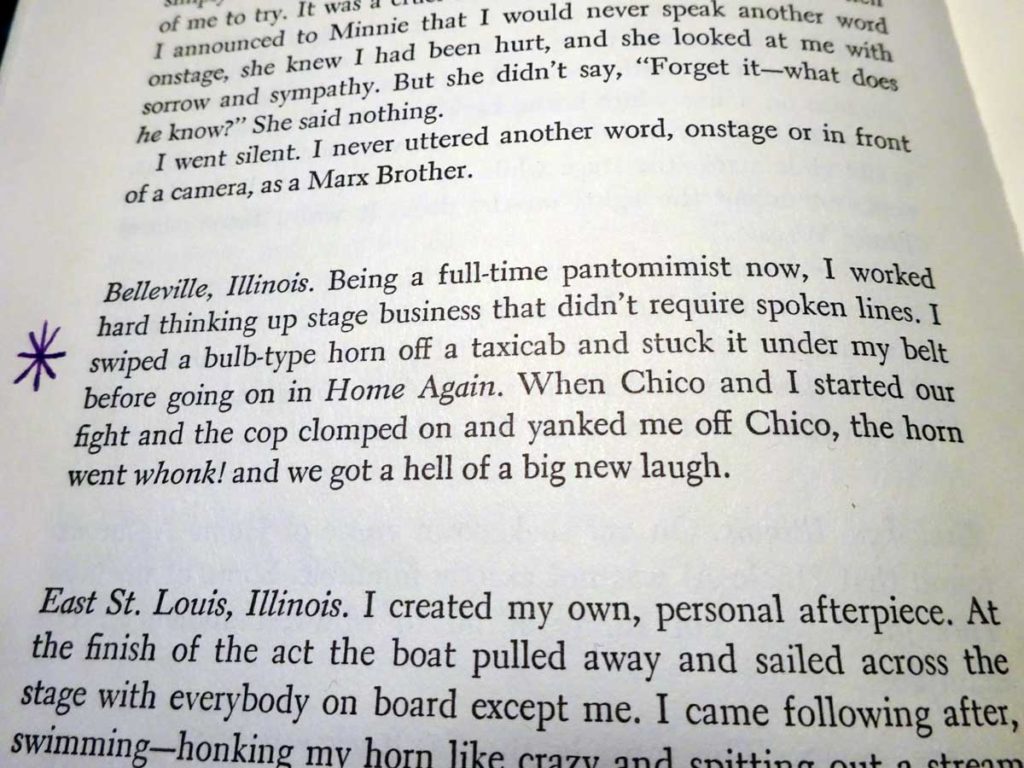
Formal Attire
Just for fun. On those special occasions when you want to make a big impression. By the way, this is a very big bike!
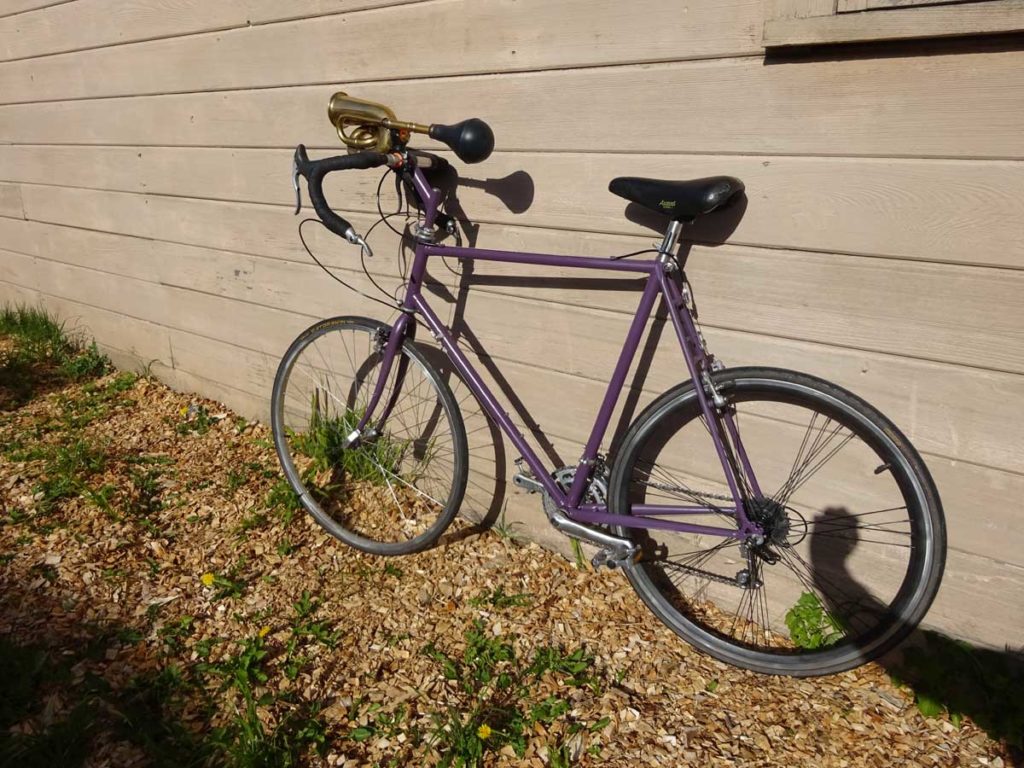

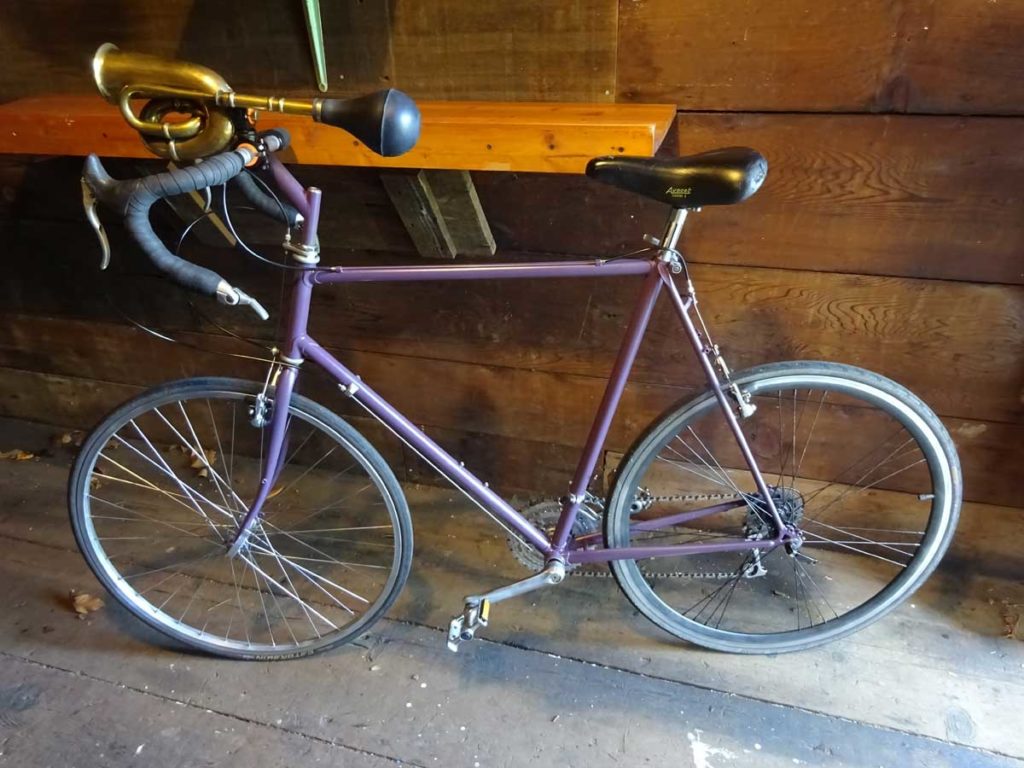
Fresh Inventory April 2021
A fresh shipment of beautiful horns just in. Thank you Alvin!!
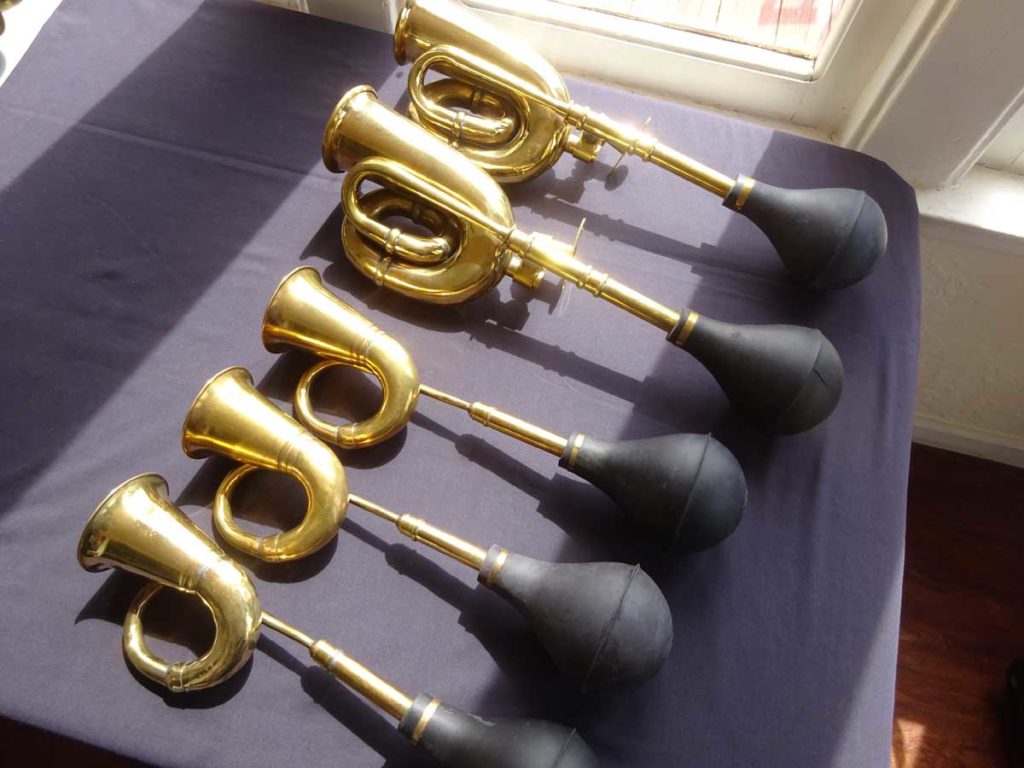
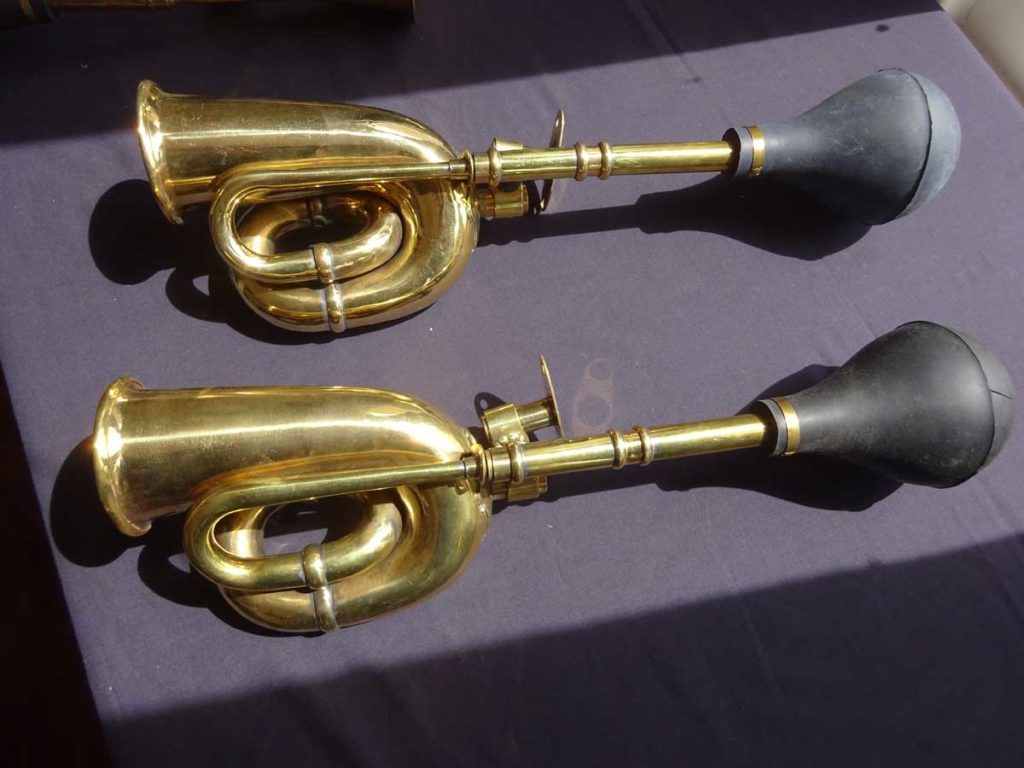
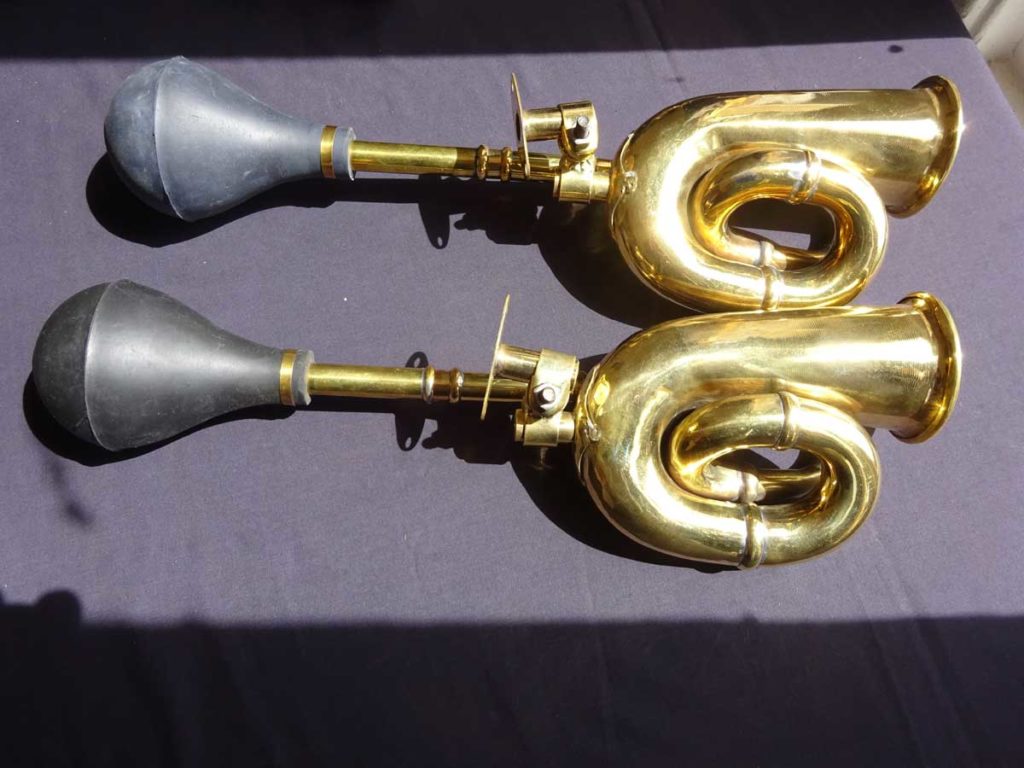
Taxi Horns
Well known for its use in Gershwin’s ‘An American in Paris’, I realized today I had no idea what in fact a ‘taxi horn’ was! If you Google it you’ll just get references to Gershwin, especially since the discovery that ‘we were doing it wrong’. (See my post here.) Consider that the horns Gershwin used were NOT what you’d typically find installed on an automobile by the manufacturer. (See vintage auto ‘bulb horns’, including many from French manufacturers here.) So what were they?
I turned to Google Books, sorted by date, and looked for references to ‘taxi horns’ from the early 1900s. Gershwin wrote ‘An American in Paris’ in 1928, and the thinking behind using taxi horns in the composition was to evoke the ambience of Paris.
Here’s what I think… In the 1920s, taxi drivers, especially in France, would sound a ‘taxi horn’ when arriving to pick up their fare.
The ‘rattle of wheels’ sounds to me like it could be a carriage.
The Man Thou Gavest
By Harriet Theresa Comstock · 1917
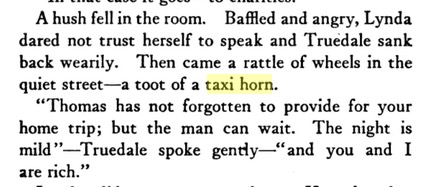
Theatre Magazine Volume 36
Published: 1922
Publisher: Theatre Magazine Company
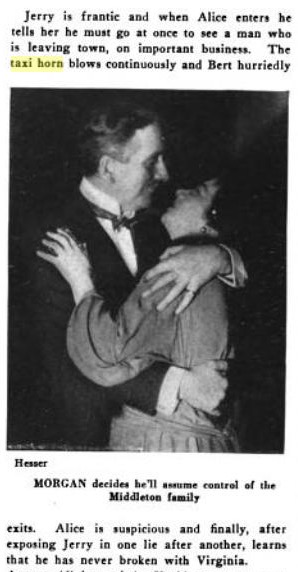
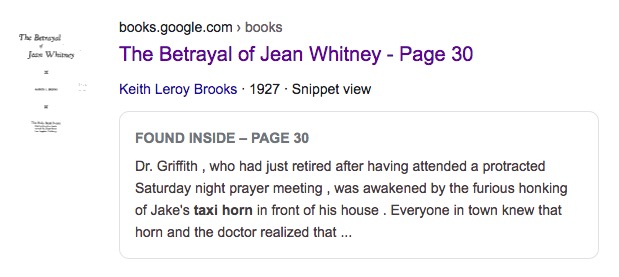
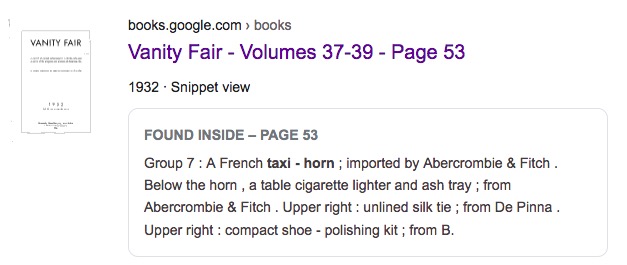
About now (1940) the term is becoming ambiguous. This could certainly be a taxi’s horn, rather than a ‘taxi horn’. 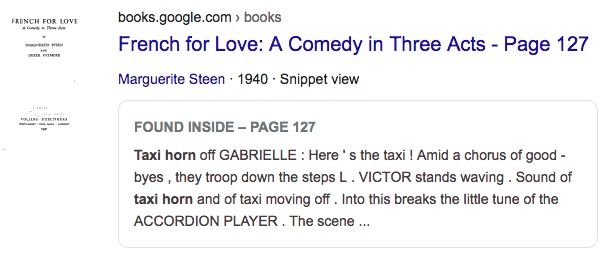
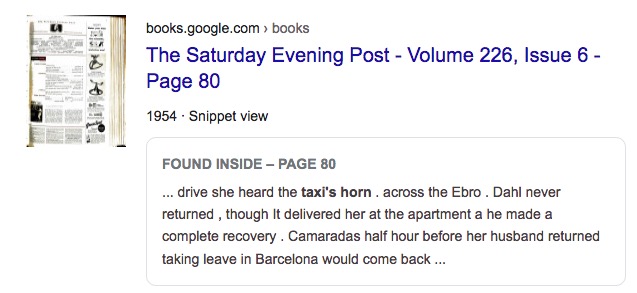
But maybe you know better, or have something to add. Feel free to leave us a comment. Thanks!
Johnny From Seattle
Johnny sent along a shot of his 16″ covered bell horn, now safely secured to his bike. I asked him how he attached it.
I couldn’t use the included handlebar clamp due to dashboard and foredeck, so I used two 3/4″ insulated conduit hangers and secured the upper segment with a zip tie.
And here’s a close-up of how he attached his horn.
A Bulb For Carlisle!
Squeeze, or Bulb Car Horns!
Earliest car horns were all bulb horns.
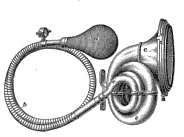
From the same book came this picture of a reed. It’s very similar to those in the squeeze horns I sell, but with a screw to adjust tension of the reed.
I just did some experimenting with a reed I have and discovered that by pulling the top ‘tongue’ of the reed away from the main portion, ie. increasing the gap, I could lower the tone. This was done by bending the reed, which is a bit dangerous considering it’s impossible to bend it back. At some point I’ll do some serious experiments with adjusting the pitch and volume, and I think adding an adjusting screw could work!

Squeeze, or ‘Bulb’ Horns Used To Be Everywhere!
Happy to report that a new shipment of horns has landed in the US and is making it’s way to my door as we speak.
Very shortly I’ll have new pics and sounds up on the site.
In the meantime, I thought you might enjoy these reminiscences from the past.
From a 1945 Popular Mechanics! Frequently used as a musical instrument! Look at those horns!
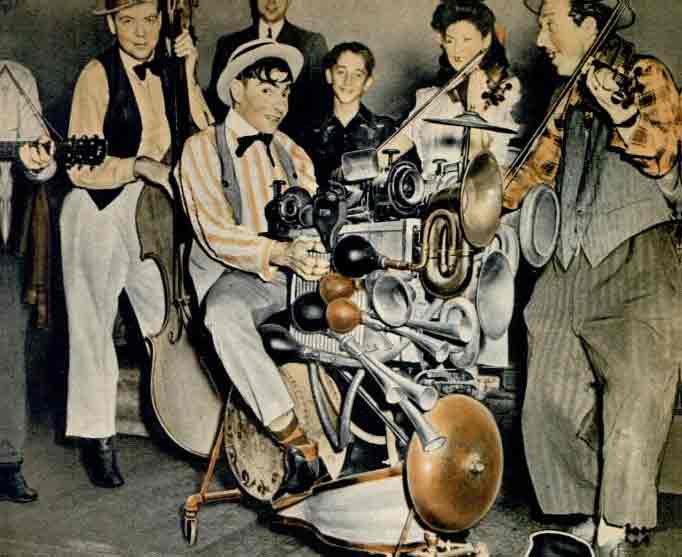
Squeeky Blue Schwinn Squeeze Horn
The benefits of a small, squeeky horn like this is that they feel ‘friendly’. Actually, I have 3 squeeze horns on my bike. A big 14″ honker for when I really need to get some attention. The small squeeze horn when I’m just intending to alert somebody, especially a pedestrian. And a mini squeeky horn just for fun with kids and dogs mostly. But I’m on the bike path a lot and the weekends are crazy with tourists who don’t know how it all works.

